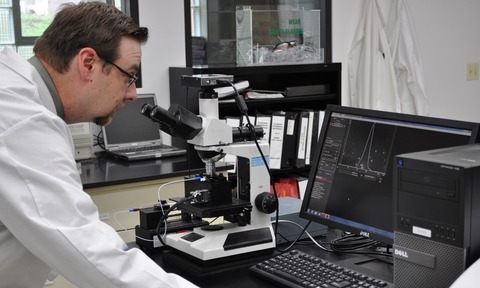
NanoSight has announced that Particle Technology Labs has established cGMP compliance for Nanoparticle Tracking Analysis.
Nanoparticle Tracking Analysis, NTA, has been adopted for research-based projects and as a quality control tool for regulated industries. PTL’s NanoSight LM10-HSB instrument is certified cGMP, which refers to the Current Good Manufacturing Practice regulations enforced by the US Food and Drug Administration (FDA).
With cGMP compliance established, NTA via PTL is now fully available to the pharmaceutical industry. NTA technology will broaden PTL’s analytical capabilities by allowing quantification of particle concentrations in the submicron range.
In addition, NTA provides an orthogonal or alternate technique to traditional dynamic light scattering (DLS), which until now was PTL’s only technique capable of submicron particle size determination.
While suitable for many samples, as with any particle sizing technique, DLS presents some specific limitations. Traditional DLS instruments typically have relatively high particle concentration requirements—a minimum of 100 to 150 ppm.
The LM10-HSB can analyse concentrations of particles as low as 50 ppm. In addition, as a technique with an intensity-weighted measurement, DLS distributions may be biased towards the upper end by just a few large particles.
NTA overcomes these limitations through its individual particle-by-particle counting. PTL’s access to NTA as an orthogonal technique will enable the validation of a hypothesis or questionable finding provided by the results of the DLS instruments obtained in-house.
William Kopesky, PTL’s Director of Analytical Services, said: “We are excited to have this new technology in our laboratory. As a cGMP qualified instrument, the NanoSight LM10-HSB expands our capabilities to our regulated clients, providing them with an accurate particle concentration and size device in the submicron range.”
He added: “NTA has significantly better resolution than DLS, as we have verified here at PTL. Its ability to count particles in the submicron range constitutes a paradigm shift. Access to NTA technology is a benefit for several applications. One example is California Proposition 65, which requires companies to test their products and materials for the existence of nano-sized particles. Thanks to the sensitivity of NTA technology, PTL can now detect an even lower level of submicron particles.”




